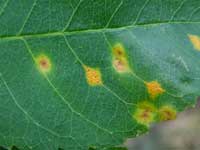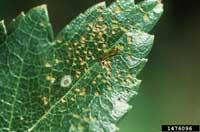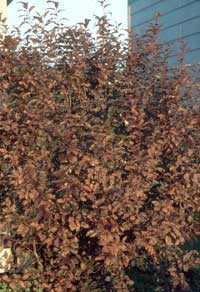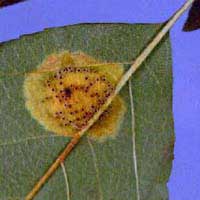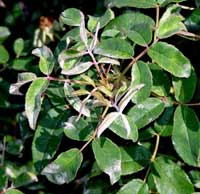Extension > Garden > Diagnose a problem > What's wrong with my plant? > Deciduous > Serviceberry > Spots or blotches on leaves
Serviceberry > Leaves > Spots or blotches on leaves
1 of 4
Quince rust
Gymnosporangium clavipes
- Fruit and stems may be swollen or distorted
- Some yellow to orange leaf spots may be present
- Tubular, white fungal spore producing structures protrude from fruit, giving it a spiky appearance
- Bright orange powdery spores may be seen on and around infected leaves and fruit
- More information on Quince Rust
2 of 4
Pear sawfly
Caliroa cerasi
- Larvae feed on upper leaf surface leaving the veins
- Damaged areas turn brown
- Tree can have a scorched appearance when populations are high; leaves can drop prematurely
- Larvae grow to ½" long, slug-like, slimy, shiny and olive green
- More information on Pear slug sawfly
3 of 4
Juniper broom rust
Gymnosporangium nidus-avis
- Leaf spots start as small yellow to orange spots with a red border and grow into large brown blotches with red margins
- Swollen yellow spots on leaf veins, petioles and green twigs
- Young shoots and leaves can turn completely brown due to a girdling infection on twig or petiole
- White tube-shaped spore producing structures form on infected twigs, petioles and the lower surface of leaf spots in July
- More information on Juniper broom rust
4 of 4
Powdery mildew
Phyllactinia guttata
- White-gray, felt-like spots or patches on leaves
- Infected leaves may curl, twist or fold upwards
- Infected blossoms are distorted, discolored and covered in white powdery fungal growth
- Lower shaded leaves and small understory trees are most commonly affected
- More information on Powdery mildew



